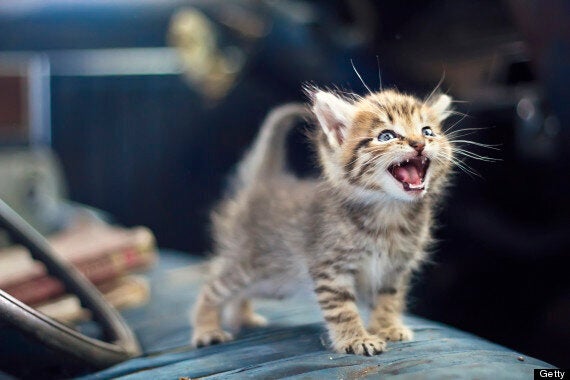Whoever says dogs are man's best friend, clearly hasn't ever shared living quarters with a cat.
Not only do our feline friends offer endless hours of entertainment - see cat-dressed-as-shark-riding-Roomba-around-kitchen video - but they provide companionship for 19% of UK households. That's some eight million cats.
Many cat owners want their pet's life to be as pleasant as possible, and so, like any other relationship, communication is key. But - for those who don't speak fluent cat (the vast majority of us) - this is easier said than done...
We spoke to cat behaviour expert Jon Bowen to find out exactly how to cats get their point across.

We mean, who wouldn't want to understand this little kitty?
How do cats communicate?
Cats communicate in three ways: vocally, through body language and by releasing different scents - although the latter is to communicate with other cats, not people.
Vocal communication
Cats make a whole range of sounds including purring, trilling or meowing - these can be divided into two types.
Positive sounds come when the mouth is completely shut (purring) or starts open and ends shut (higher frequency trills or chirrups). These are friendly, encouraging sounds - like saying "hi".
Hostile or negative sounds often involve the mouth being and remaining open (hissing) and mean "go away, leave me alone".
Visual communication
Cats communicate through body postures and facial expressions. Friendly gestures include sticking their tail up, blinking slowly while looking directly at you and proximity - sitting close but with their back to you is a greeting, believe it or not!
Olfactory communication (scent)
They also use smell to mark their territory, which is a form of communication. But this is communication for other cats, not people.
When they rub against things they are leaving a scent, saying "I live here, this is a safe comforting place", whereas spray marks are a warning for other cats to steer clear.
Do cats have their own language - or different sounds to shows they need something specific?
No. Cats have not evolved to communicate their specific needs vocally. As animals they are independent and don't co-operate with others, so although they can say "I want" they can't tell you exactly what they want.
We tend to think we can understand individual sounds - such as hunger or wanting to go outside - but that is not true.
When we do understand their needs, it's often because of context and are a result of other factors, such as location and body language. If a cat is nudging its food bowl in the kitchen or miaowing by the back door, it is clear what they want.
Can owners understand their own cat better than other people?
All cats have the same basic set of noises, but it's likely that owners would be able to identify their own cat compared to others.
There is research to suggest that cats learn how to make noises to get a greater reaction from their owners.
For example when trying to convey something - they can make a request sound urgent by adding a higher frequency undertone to purring sounds.
How can you tell if your cat is unwell?
There would be multiple indicators, but ultimately a cat would change their behaviour to communicate this. Some cats would miaow more often, or use a distressed tone. They may become less active or move around slower.
It's about getting to know your own cat.
Cats do have distress vocalisations, like other animals and they all sound very similar. A cat's wail, for example, has much in common with a child's cry. A cat will make a wailing sounds to signify that it is unwell or afraid.
Jon Bowen is a regular contributor to Your Cat magazine.